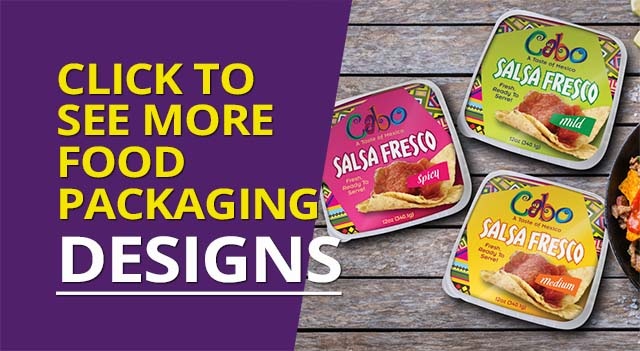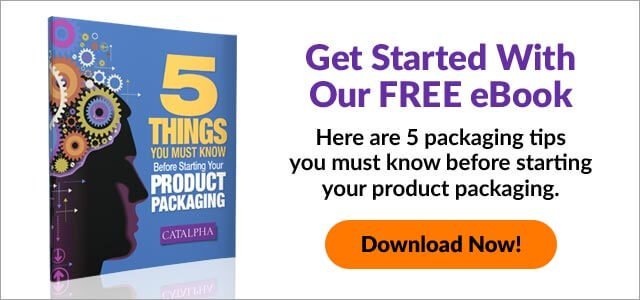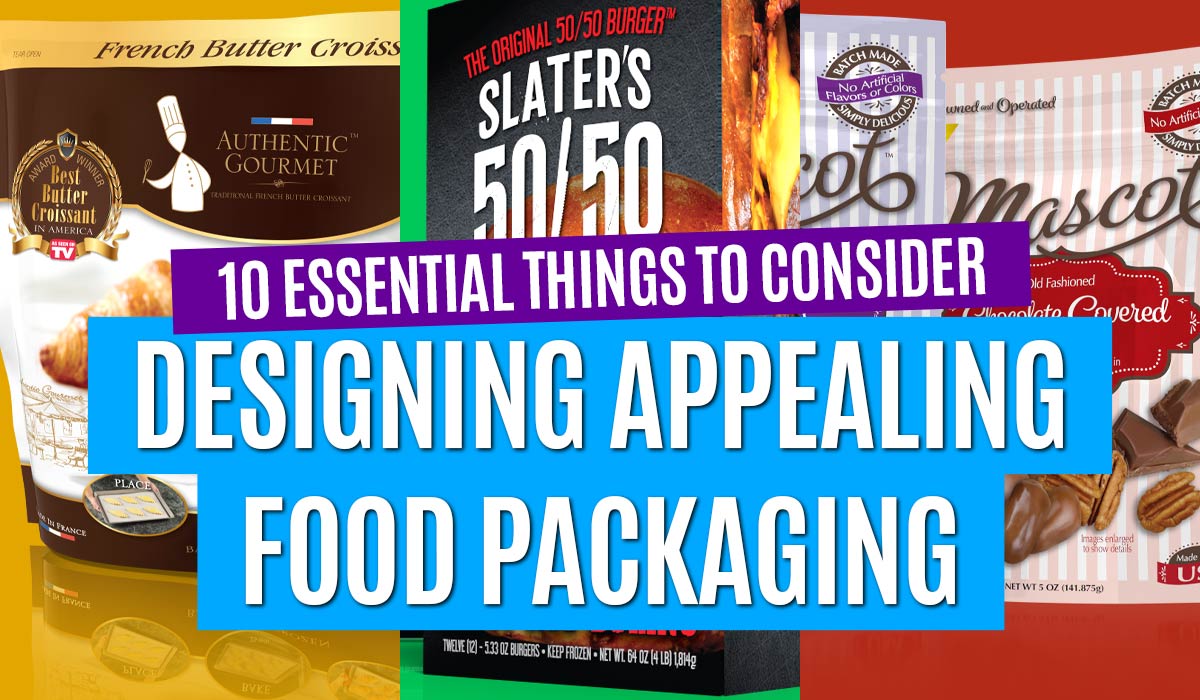
The food industry is one of the most competitive industries out there.
Consider your local supermarket and the number of products that are available in each and every aisle of the store.
The sheer volume of choice is staggering and it’s crucial that you as a producer do what you can to stand out from the crowd.
Nowadays, your food packaging design, quite simply, is make or break for how you are going to do in the marketplace.
Table of Contents
1. Create A Brand Identity
2. Use Elements Of Architecture
3. Make Sure The Packaging Complements The Contents
4. Rely On A Food Packaging Design That Conveys Simplicity
5. Create Packaging For Design Versatility
6. Introduce Limited Editions
7. Consider A Range Of Materials
8. Be Creative To Avoid Printing And Production Costs
9. Play With Patterns And Color
10. Talk Up The Product’s Benefits
Traditional marketing, social media campaigns, and digital marketing efforts will certainly help your cause.
Sponsorships, affiliations with charities, sports events and even word-of-mouth marketing still have a huge impact in terms of your product’s success.
However, if your product is not packaged in a way that is appealing to your target market, you will struggle to succeed with any type of marketing campaign.
An appealing food packaging design will help you place your product in the mind of the consumer in a positive and memorable way.
It will build culture around your products and evoke feeling and emotion in your customer and best of all can help you increase sales.
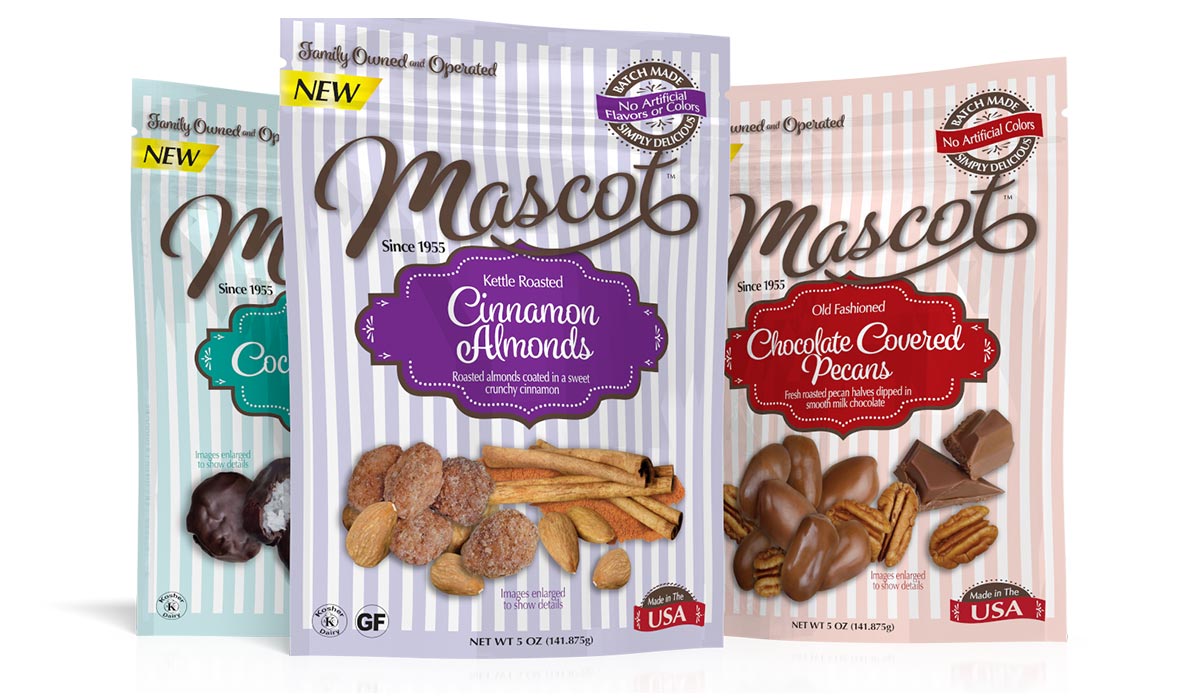
You can also show that you are ethical, forward-thinking and a conscious business and show customers how much your company cares.
With so much of your potential success relying on the food packaging design you select, let’s take a look at 10 essential things that every food producer must consider when designing appealing food packaging for your products to ensure they fly off the shelves.
What Makes Good Food Packaging Design?
When customers are standing in front of the refrigerator in a grocery store, they are faced with so many choices.
Purchasing decisions like this one are made quickly and almost instinctively.
The consumer’s eye will be drawn to the product whose packaging design is most appealing to them and tells them that that particular product will solve their problem, i.e quench their thirst and leave them feeling refreshed.
Your food packaging design needs to lure them in through the imagery, colors, fonts, and information you present them.

1. Create A Brand Identity
One of the central tenets of food packaging is creating packaging that closely aligns with the values of the business, or creating a package that bolsters your brand identity.
For example, high-end foods like expensive chocolates tend to be packaged in ornate boxes featuring images that exude luxury, whether the box’s containers have a satin veneer or are wrapped in fancy ribbons.
This packaging is designed to convey to its target market (those who love luxury) that they too have the same values.

Pick any green product to see the way brand identity is conveyed to consumers.
The packaging is usually made up of recycled materials and the graphics are minimalist in design reflecting the brand’s simplistic values.
Brand identity is about conveying your values to consumers to connect to them in a way that makes them want to invest in your product, whether you are selling expensive candy, organic fruit juice or canned fruit in light syrup.
In developing a brand identity for your product, you should always aim to:
- Analyze the company and your market.
- Establish key goals.
- Identify customers.
- Create a personality for the product.
This process will require you to take inventory of your business and then develop reasonable goals and objectives that include finding your consumer market.
However, after much of the grunt work is finished, you get to have fun and talk up your brand by creating its personality through creative marketing campaigns and strategies.
2. Use Elements Of Architecture
The architecture of the packaging design should fall in line with the three simple principles:
- Form
- Function
- Beauty
It’s important to remember that the package’s function is to protect the contents, keep its form in relation to the size and shape of the product, and the beauty in terms of how aesthetically pleasing it is to consumers.
When choosing a food packaging design, designers have to make sure that form, beauty, but above all, function are accomplished as to not lose money if the product arrives at the store damaged.
Many health food products illustrate this idea of combining form, function, and beauty.
In the case of refrigerated products, P.O.M juice containers convey these principles in that its container, filled with pomegranate juice, looks as if two ripe pomegranates are placed on top of each other (beauty).
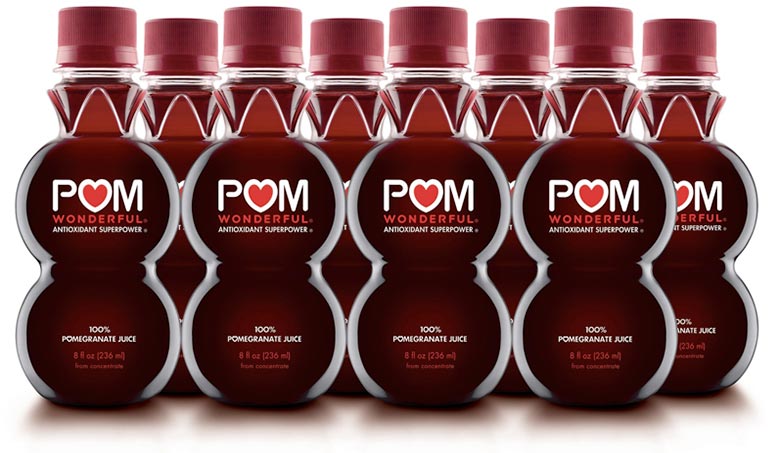
The bottles are fortified enough to transport the drink to any grocery store (function), and more significantly, they sit comfortably among other products on the shelf (form).
Because of this design, the product is probably one of the more appealing ones on the shelf, and one that customers would be willing to pay a little more to enjoy.
Think about it. You have a few seconds to snag the customers’ attention away from other products.
In those few seconds, you must grab their attention, and clearly and concisely tell the consumer the contents of the bottle.
Information related to nutritional contents has to be readily seen and Always keep in mind that you are competing with other products advertising similar or better advantages.
By applying the elements of architecture, you have created a product that at least appeals to consumer taste.
3. Make Sure The Packaging Complements The Contents
This consideration may seem kind of simple in the context of this discussion, but yes, the actual food contents are a big factor in determining the food packaging materials.
Foods that have more preservatives and a longer shelf life might give you more flexibility than foods that spoil quickly and need to be refrigerated and packaged in plastic sealed packaging or aluminum.
However, safety concerns are not the only considerations.
The contents should match up with the food packaging design you choose.
Crisps do not come in containers that hold crackers or other types of cookies because, for one, they would get smashed, and you definitely would not see flavored water contained in a pop-top soda can because water is not carbonated nor does it contain ingredients that need to be contained in aluminum.
Food product designers must create packaging that is appealing, and while it might seem difficult, many have actually created packaging that is original and engages the consumer.
The Pringles crisp company is an example of a company that has perfectly matched their food product with the container that packages it.
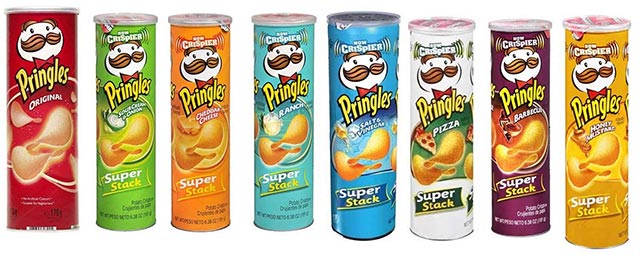 |
| hindmarkets.in |
The elongated cardboard tube that contains the artfully shaped stackable crisps comes in many different flavors today, but the earliest version of this product came in a bright red container featuring a mustached man.
This packaging appealed to millions of consumers who are responsible for popularizing the product, and more significantly, creating a buzz that has helped to make the product popular in more than 140 countries outside the United States.
4. Rely On A Food Packaging Design That Conveys Simplicity
Depending on the food product, designers might want to adhere to graphics that make the consumer associate it with food that is natural.
As opposed to using busy designs that contain a lot of images or have many different colors, some products are good at conveying this idea by relying on no more than three colors and a simple script to make this point to the consumer.
Often these products use a simple background (black, white or another neutral color) with very few graphics and script to convey this idea.
The food product might contain a variety of ingredients, but its packaging design says otherwise.
By reducing the amount of color, designs, and script on the package, consumers have a clear understanding of what is contained in the product.
There is no script advertising the product is low in calories or low in preservatives, but the consumer can get this same message by looking at the design and flipping the product over to see its nutritional label to see if the design matches the content.
A very good example of the way in which this simplicity is conveyed to the consumer is Justin’s All Natural Maple Almond Butter.

The jar is has a white cover with a simple picture of an almond.
The script is a brownish one similar to the outside cover of an almond. Part of the product is visible through the clear part of the package, almost inviting the consumer to taste the product.
The product itself looks absolutely delicious and one can only imagine pairing it with an apple, crackers, or a hearty piece of bread.
5. Create Packaging For Design Versatility
Making sure your design can be used in a number of ways is also a very important consideration.
Often times, food manufacturers create designs for packaging that contain standard sizes of products containing more than one serving, for example, a box of crackers.
The design is appropriate for a box of crackers. However, sometimes manufacturers will produce single servings or pair the product with other food pairings.
For this reason, the design, including the logo, has to fit comfortably in a number of different types of packaging.
The famous Philadelphia Cream Cheese is a great example of food packaging versatility.

The creamy spread comes in a blue and silver plastic package within a standard small light cardboard box of the same color.
The blue script is placed in white a spherical background, and Kraft’s logo appears at the top of the sphere.
This product not only comes in this original packaging, but it also comes in single serving sizes, plastic containers (large and small), and container specially made for whipped cream.
The product’s design is appropriate for all of the various ways the product comes packaged because both its design and logo can be seen clearly, regardless of the packaging.
For manufacturers, making sure that your food packaging can be used in a number of ways accomplishes two major goals:
- It must allow you more chances to cater to the various tastes in your target population.
- Your packaging should allow customers to instantly recognize your product so that in the long run, you save money on having to re-invent a design for products that might be packaged differently.
6. Introduce Limited Editions
When designing packages for food, consider including designs for limited editions. Consumers love limited editions of any food product.
Go into any grocery store during Halloween or any other major holiday, and you can see the plethora of limited edition products.
Alternatively, walk into any franchise coffee shop during the holidays, and you can smell the aroma of spiced flavored coffees in the air, whether it is chocolate mint or the equally popular pumpkin spiced-flavors.
These limited edition products draw consumers to make purchases.
Starbucks, for example, will advertise their limited edition coffees, and when purchased, the warm drink is always in a seasonally designed cup.

Alternatively, the Coffee Bean and Tea Leaf’s summery Blueberry Pomegranate or Pina Colada smoothies become customer’s favorites during the very hot months of June, July, and August.
These drinks that are not found all throughout the year become favorites because their cups signal the beginning of the season for many.
7. Consider A Range Of Materials
Food can be packaged in a variety of materials, but when choosing packaging, companies have a number of considerations to make.
- The packaging has to allow for products to be delivered to the grocery while remaining edible.
- While form and beauty are important, manufacturers have to make sure the product’s packaging is strong enough to transport the food without it spoiling or sustaining some other damage.
- Always make sure that the package can be easily stored for transport and placed on the shelves among other items. Food packaging that is bulky or takes up too much space, while great for you, might be a hassle for the grocer, or worse yet, make it difficult to shelve.
- Manufacturers also have to take into consideration the amount of time the product might sit on the shelf before consumers purchase it.
- You will have to place nutritional and content information somewhere on the packaging, which can interfere with the design if the packaging is too small.
Before creating the design, manufacturers have to take all these factors into account.
However, manufacturers tend to stick to a few common materials.
Much of the food packaging materials are made out of plastic, aluminum, and cardboard.
With that said, niche or epicurean markets might use alternative materials like wood, metal, and glass containers to hold items like wine, tea, and soda, respectively.

Jams and jellies are often contained in glass with paper coverings as a change to the traditional packaging as well.
Being creative with your food packaging might convey a sense of tradition, or even better, frivolity.
8. Be Creative To Avoid Printing And Production Costs
A major consideration, central to any food packaging design, is the cost.
Common sense dictates that the cost to print and produce the package should not be more than the product itself.
Manufacturers on a budget might find themselves in constant conflict in trying to present an aesthetically appealing product to the public inexpensively.
However, with the variety of materials today, along with modern ingenuity, manufacturers have come up with creative ways to print and produce packages inexpensively.
McVitie’s Digestives, for example, has come up with a simple food packaging design that is attractive to the consumer.

The tea biscuits come in a variety of flavors including plain and chocolate-covered.
Instead of packaging them in a bag or package, manufacturers simply stacked them and packaged them in a plastic-papery material that can be easily sealed after being opened.
Their products appeal to millions both nationally and internationally because of this simplicity.
9. Play With Patterns And Color
While keeping it simple is always good in terms of cost, don’t be afraid to use patterns and bright colors.
Creating brand loyalty comes after consumers become familiar with the brand.
One way to attract customers to your brand is to play around with color and various patterns.
Many people remember Walker’s Shortbread Cookies for both their packaging and design.
The package design’s color is red and patterned, similar to red and black plaid.
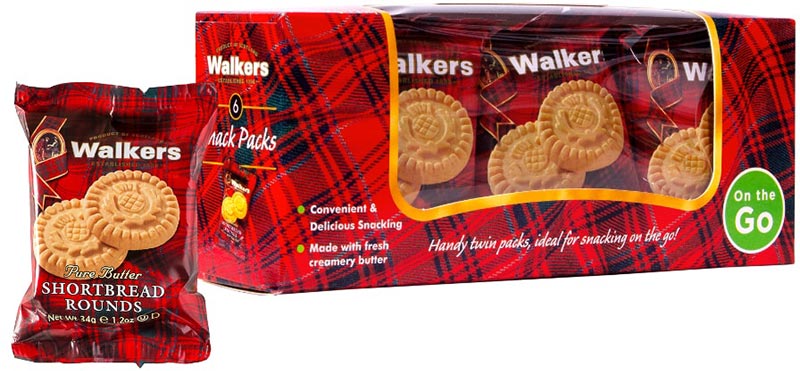
This design is very much a divergence from the packaging of other brands, which might rely on solid colors to convey the same message.
Because of this familiar design, the product is a staple in many households around the holidays.
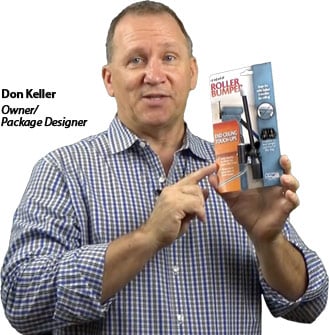
Want Us To Do It All For You?
Best Package For You - We’ll determine the best type and size of package that fits your product and your budget.
Design - We’ll create a design that will stand out from your competition.
We’ll Get it Printed - Don’t be left with a pretty design and nothing else. We can also print your package so you can get it on the shelf and sold!
10. Talk Up The Product’s Benefits
One of the best ways to catch the attention of consumers is to talk up the product’s benefits on the packaging by mentioning some of the product’s health advantages.
Today’s consumers are very aware of the types of ingredients in the products being sold to them, and products that clearly and concisely explain the contents quickly are more likely to be chosen than others.
Whether the product contains a particular vitamin or lacks a dangerous ingredient, the words on the package just as much as the package itself in many ways can be eye-catching, especially with today’s health-conscious, nutrition savvy public.
For example, numerous products have product descriptions that advertise their products as not containing transfats, or even better yet, high fructose corn syrup.
Crisco, for one, advertises that its vegetable oil does not contain trans-fats, which for consumers is a plus.
Other products like Heinz carries a version of ketchup free of high fructose corn syrup, one of the worst types of sugars.
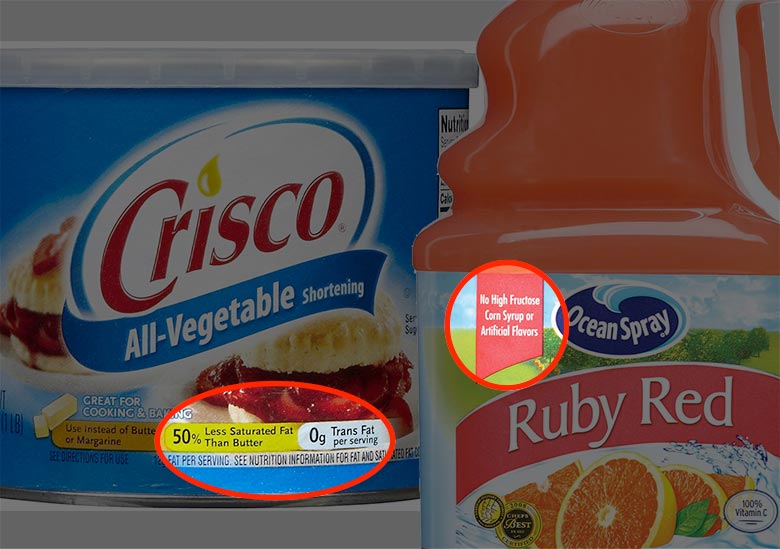
By placing a short description to highlight these benefits on the packaging, consumers can quickly surmise the nutritional value of the product and make a decision as to whether to buy or not.
Packaging For Public Attraction And Consumption
There is a lot that goes into creating an appealing food packaging design that will attract and engage consumers.
In addition to pattern and color, food packaging designers have to keep printing and production costs in mind, as well as the types of materials used to package the food product.
Furthermore, if the product is to be packaged in a number of sizes and flavors, designers have to make sure the design and imagery can be adapted to every package.
Food packaging designers have become experts in creating packaging types that, are not only attractive to consumers but also can withstand the elements while being transported to another destination.
Today’s packaging seems to run along a couple of themes including conveying simplicity through no-frills design, or conversely, intricately designed packaging that conveys the brand’s identity.
Ultimately, though, the packaging design’s purpose is to get consumers to trust in your product and convert them into loyal customers of your brand.
If you read this entire blog and still have questions, we're happy to help. Just use the form below...
You may also be interested in these articles:
Tips To Get Your Product Into The Big-Name Stores
Tips for Packaging Expensive Products
Why Brand Credibility and Package Design Are So Important

